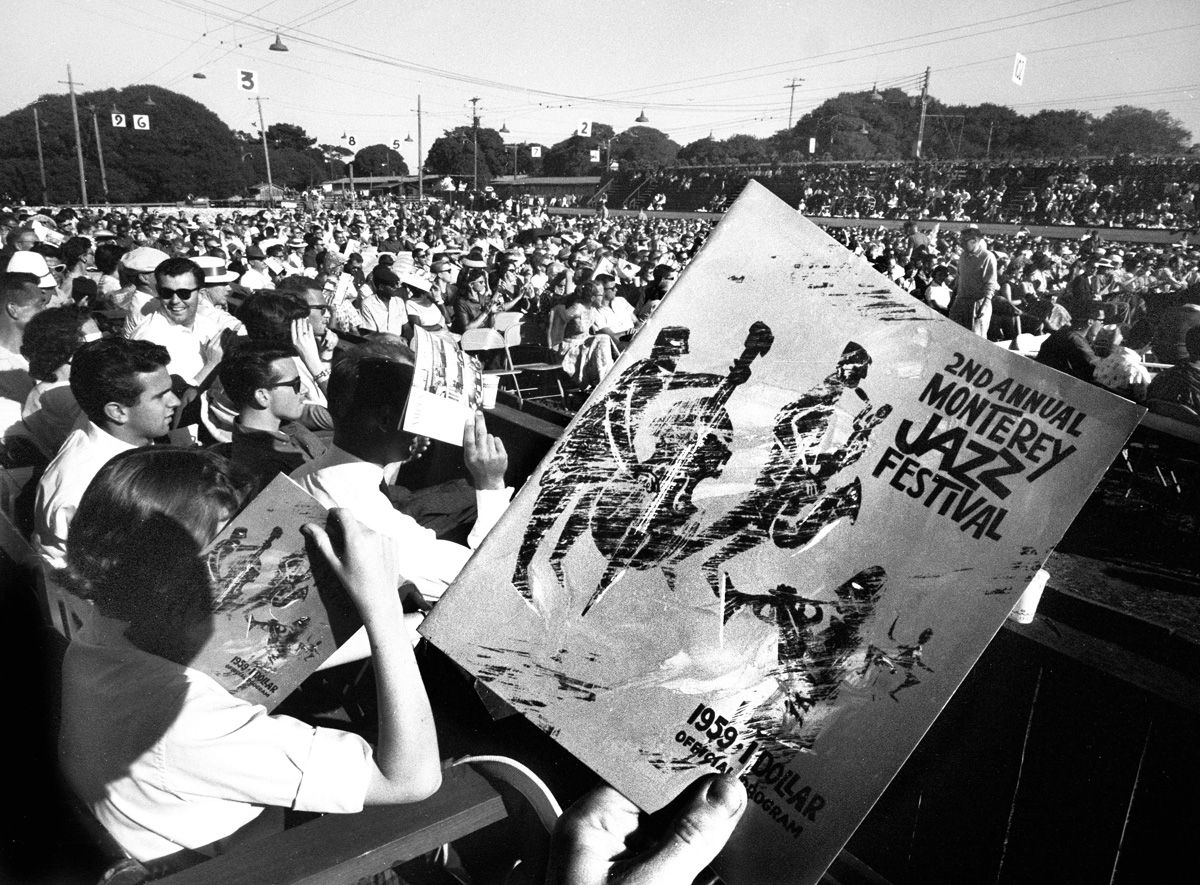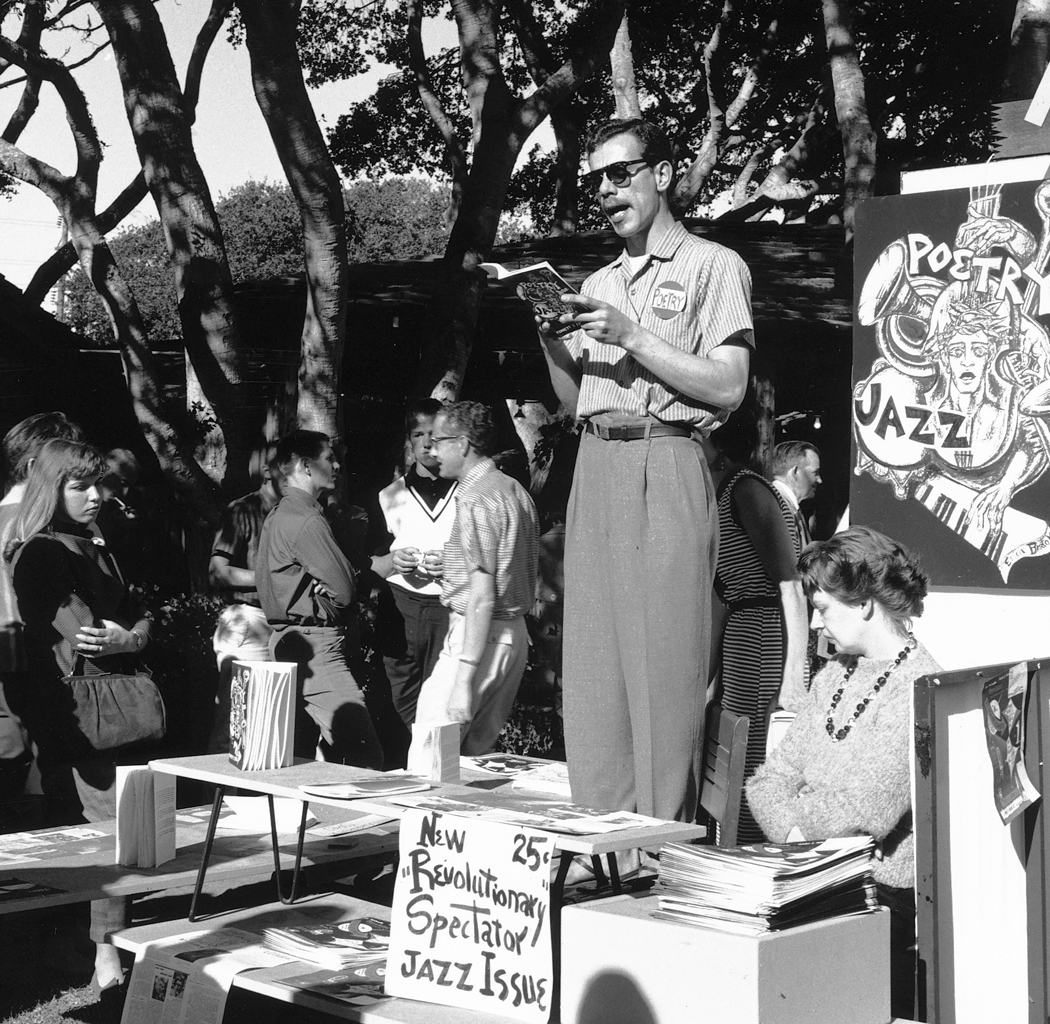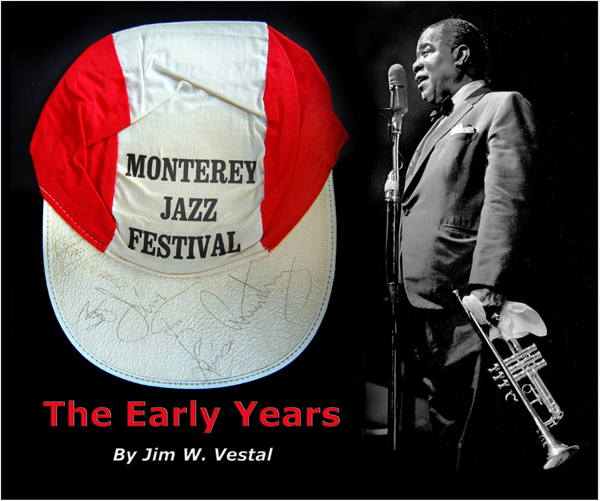Music in the Air - Page 5
 |
|
|
 |
|
|
 |
|
|
 |
 |
|
|
By 1961, the Festival was more than $12,000 in the black, and things stayed solvent, despite the costliness of some large-scale productions of an almost theatrical scope (with large musical casts), including Jon Hendricks' 'Evolution of the Blues Song' in 1960, Lalo Schifrin's 'Gillespiana'in 1961, and Dave and Iola Brubeck's 'The Real Ambassadors' in 1962. In the early years, these shows became proud trademarks of the Festival, rather than liabilities. "Monterey was making West Coast jazz reputable," observed author Ira Kamin.
The annual event began to attract repeat customers, eventually spanning generations. Lyons referred to "little clusters of people, sitting in the same seats, year after year: 'You bring the pot, I'll bring the booze, and Joe'll bring the sandwiches.'"
Besides illuminating newer trends in jazz from this era, Monterey also celebrated the music's history. "We brought back a lot of warriors, just before they died," Lyons would reflect in 1978. "And we've been responsible for bringing back a lot of people whose careers had fallen apart. You feel good about that."
Aside from veteran big band leaders and section players, the Festival, in 1964, set a tradition of Saturday afternoons devoted to the blues. Gillespie, Hendricks, and Joe Williams took this opportunity to vocalize with blues shouter Big Mama Thornton. Several artists preserved their appearances at the 1966 Festival on successful live recordings.
Through ensuing decades, Monterey grew well beyond its founding vision, attempting to cater to the changing tastes and economics of its fans, performers, the boards of directors, and the music industry.
Occasional rock acts were featured (eventually spawning the separate Monterey Pop Festival in 1967), and world music joined other genres as the Festival's operations spread to an increasing number of smaller venues across the Fairgrounds, beyond the main arena. It was evident that "a lot of people learned from what Jimmy was doing, what's possible with a jazz audience," Brubeck pointed out.
Clint Eastwood, who used the Festival as a backdrop in his 1971 directorial debut, Play Misty For Me, and who joined the board of directors in 1992, recalled that in "the '70s and '80s, everyone got serious—maybe too serious, because jazz is bluesy and forlorn, but also happy and upbeat." By the time of his bass-playing son Kyle's Festival debut in 1996, Eastwood was "glad to see that there seems to be a shift back to that feeling of celebration in jazz."
But that was four years past Lyons' rather reluctant exit from the main arena stage (later named for him), and two years past his death. Gleason, Gillespie, and Brubeck are also now gone.
What those founding fathers brought into being continues to carry on, as fans around the world look ahead to next year's edition—the 60th anniversary of the Monterey Jazz Festival. Always a welcome and wonderful highlight on the jazz calendar.
• For information on the Monterey Jazz Festival yesterday and today, visit montereyjazzfestival.org
Photography: Sam & Jim Vestal (courtesy ©Jim W. Vestal), Arthur McEwen (courtesy ©Monterey Jazz Festival), Jerry Stoll (courtesy © Casey Stoll)




